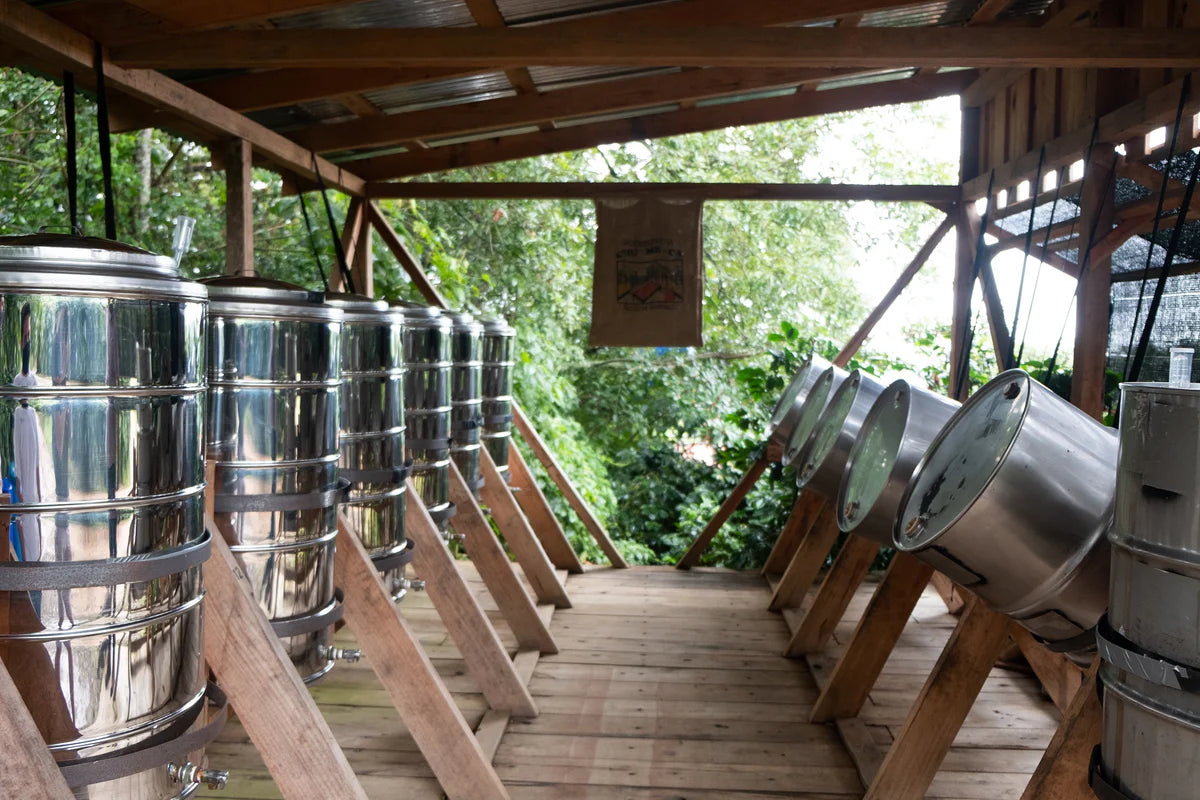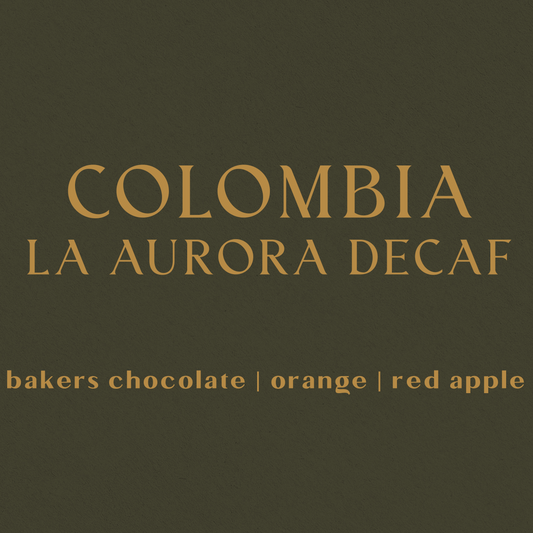
Anaerobic
Anaerobic Processed Coffees: A Technical and Sensory Overview
1. Historical Background
The anaerobic process is a relatively new innovation in the long history of coffee processing. Unlike the more traditional washed and natural methods, which have been used for centuries, anaerobic processing emerged prominently in the specialty coffee scene within the last 10 to 15 years. Its roots are influenced by practices in the wine industry, where oxygen-restricted fermentation is a standard for developing complexity and distinctiveness in flavor.
The technique was first explored by progressive producers in Central and South America—particularly in Colombia and Costa Rica—who sought new ways to differentiate their coffees in a saturated specialty market. Early adopters began experimenting with sealed tank fermentation, controlling variables such as temperature, time, and microbial activity to influence cup profile. As positive feedback grew among cuppers, roasters, and international buyers, anaerobic fermentation quickly gained traction across producing countries.
2. Technical Method and Fermentation Process
Anaerobic coffee processing involves fermenting coffee cherries (either whole or pulped) in an oxygen-free environment. Typically, the coffee is placed into sealed stainless steel or plastic tanks, and the lid is secured to prevent oxygen from entering. This creates an anaerobic—or low-oxygen—environment, which alters the metabolic pathways of the microbes responsible for fermentation.
There are several variations of the anaerobic process:
Anaerobic Natural: Whole cherries are fermented in sealed tanks, then dried without depulping.
Anaerobic Honey: Cherries are depulped but mucilage is retained before fermentation.
Anaerobic Washed: Cherries are depulped, fermented anaerobically, and then fully washed before drying.
Key variables that can be manipulated include:
Fermentation time (ranging from 12 hours to several days)
Temperature control
Cherry ripeness and density
Microbial additives (in some advanced cases)
Once the desired fermentation is complete, the coffee is dried on raised beds, patios, or in mechanical dryers. The result is a bean with a unique biochemical fingerprint that influences flavor, texture, and aroma in the final brew.
3. Flavor Profiles and Sensory Characteristics
Anaerobic processed coffees are known for their intense, distinctive flavor profiles. In cupping sessions, they often stand out due to their vibrant and sometimes wild aromatic expressions.
Common tasting notes include:
Bright, lactic acidity (yogurt, sour cream)
Exotic fruitiness (pineapple, mango, cherry, passionfruit)
Spiced or winey characteristics (cinnamon, clove, mulled wine)
Dense, often syrupy body
Long, lingering finishes
These coffees can be polarizing. Some cuppers and baristas prize the uniqueness and complexity, while others find them overpowering or inconsistent. When executed with precision, anaerobic coffees can perform extremely well in competitions and high-end markets due to their showstopping attributes.
4. Market Dynamics and Production Considerations
In today’s specialty coffee market, anaerobic coffees occupy a niche—but growing—segment. They are often featured in limited-release roaster offerings, barista competitions, and microlot auctions. Because of the technical complexity and high labor input, these coffees typically fetch premium prices and are marketed as exotic or experimental lots.
From a production standpoint, anaerobic fermentation is a high-risk, high-reward technique:
If the process is not carefully monitored, the result can be undesirable off-notes (e.g., rotten, overly fermented, or sour flavors).
Tanks must be sanitized and reused carefully to avoid contamination.
Fermentation must be stopped at just the right time to maintain clarity and cleanliness in the cup.
Moreover, producers need to invest in sealed tanks, thermometers, pH meters, and other tools to refine their process. However, for many producers—especially in Colombia, Costa Rica, Brazil, and Ethiopia—anaerobic processing has become a way to add value and stand out in a competitive global market.
5. Outlook and Future Potential
The future of anaerobic processing is promising, especially as consumer interest in unique, traceable, and story-driven coffees continues to rise. Innovations are likely to include:
More scientific control over fermentation variables using biochemistry and microbiology
Cross-breeding with carbonic maceration techniques from the wine industry
Data-driven protocols for improving repeatability and quality
Producer-led branding of custom fermentation styles
While not suitable for all coffees or all markets, anaerobic processing represents the next frontier of flavor experimentation in coffee. As producers continue to refine the process and educate buyers about its complexities, we can expect to see more structured, high-quality anaerobic coffees entering both retail and wholesale channels.
Shop Anaerobic Process
-
 Sold out
Sold outColombia Finca La Aurora Decaf
Regular price From $26.00 USDRegular priceUnit price / per -
Santiago Patiño
Regular price From $31.00 USDRegular priceUnit price / per -
 Sold out
Sold outJava Puncak Sirna
Regular price From $20.00 USDRegular priceUnit price / per



